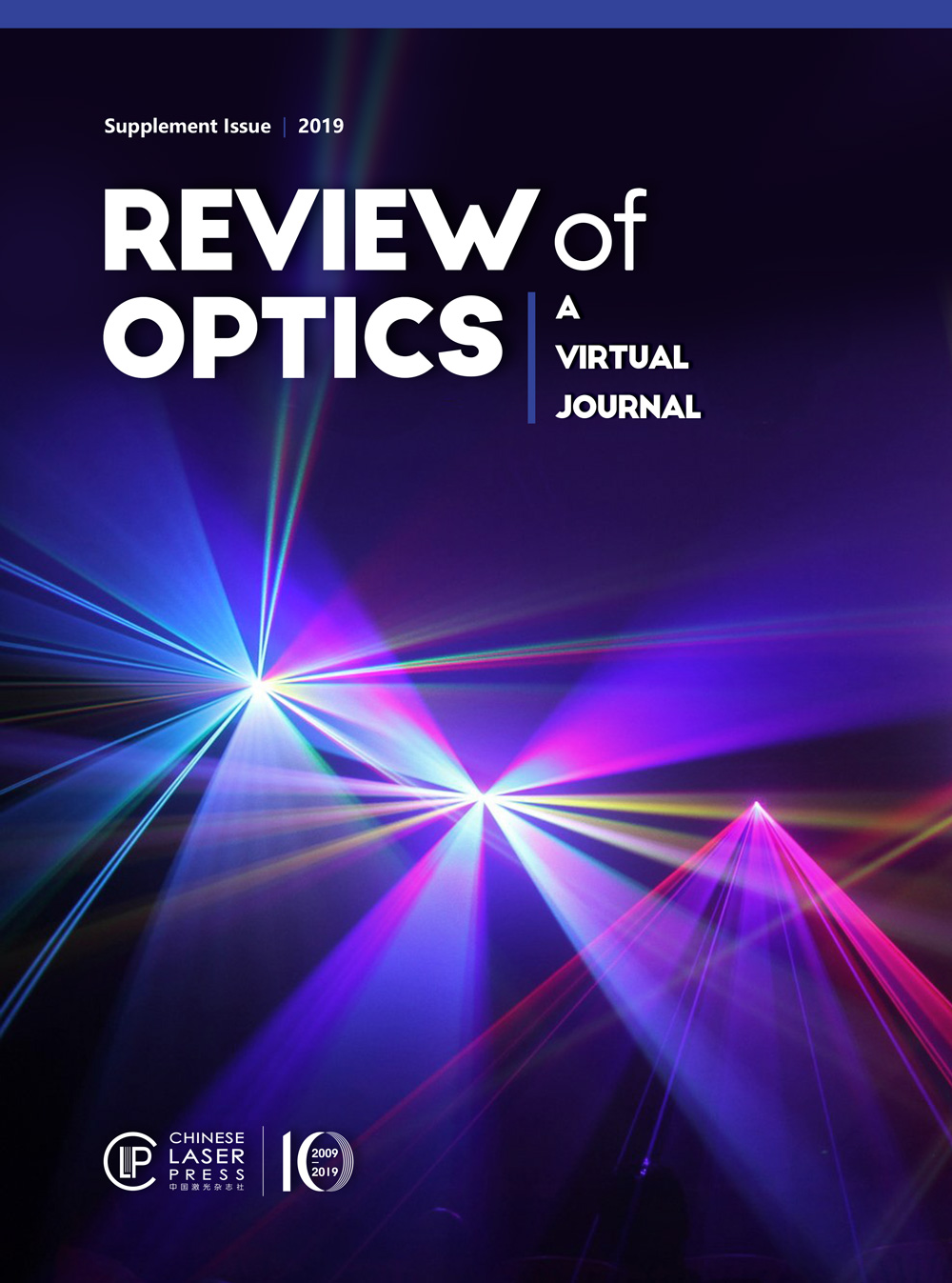Journals >Review of Optics: a virtual journal
- Publication Date: Aug. 01, 2019
- Vol. 7 Issue 8 08000B55 (2019)
- Publication Date: Oct. 10, 2019
- Vol. 17 Issue 10 100002 (2019)
- Publication Date: Oct. 10, 2019
- Vol. 17 Issue 10 100007 (2019)
- Publication Date: Oct. 10, 2019
- Vol. 17 Issue 10 100009 (2019)
- Publication Date: Mar. 10, 2019
- Vol. 17 Issue 3 030601 (2019)
- Publication Date: Mar. 10, 2019
- Vol. 17 Issue 3 030604 (2019)
- Publication Date: Apr. 10, 2019
- Vol. 17 Issue 4 040601 (2019)
- Publication Date: Sep. 10, 2019
- Vol. 17 Issue 9 090603 (2019)
- Publication Date: Nov. 10, 2019
- Vol. 17 Issue 11 111001 (2019)
- Publication Date: Apr. 17, 2019
- Vol. 7 Issue 5 05000532 (2019)
- Publication Date: Apr. 30, 2019
- Vol. 7 Issue 5 05000594 (2019)
- Publication Date: Jul. 26, 2019
- Vol. 7 Issue 8 08000905 (2019)
- Publication Date: Jan. 10, 2019
- Vol. 17 Issue 1 012302 (2019)
- Publication Date: May. 10, 2019
- Vol. 17 Issue 5 052301 (2019)
- Publication Date: Dec. 05, 2019
- Vol. 17 Issue 12 122402 (2019)
- Publication Date: Jan. 10, 2019
- Vol. 17 Issue 1 012501 (2019)
- Publication Date: Jan. 09, 2019
- Vol. 7 Issue 2 02000121 (2019)
- Publication Date: Apr. 11, 2019
- Vol. 7 Issue 4 04000381 (2019)
- Publication Date: May. 08, 2019
- Vol. 7 Issue 6 06000A14 (2019)
- Publication Date: Jan. 01, 1900
- Vol. 7 Issue 3 03000e56 (2019)
- Publication Date: Jan. 28, 2019
- Vol. 1 Issue 1 014001 (2019)
- Publication Date: Jan. 28, 2019
- Vol. 1 Issue 1 014002 (2019)
- Publication Date: Mar. 27, 2019
- Vol. 1 Issue 2 024001 (2019)
- Publication Date: Apr. 03, 2019
- Vol. 1 Issue 2 024002 (2019)
- Publication Date: May. 09, 2019
- Vol. 1 Issue 3 034001 (2019)
In the 2015 review paper ‘Petawatt Class Lasers Worldwide’ a comprehensive overview of the current status of high-power facilities of
In the 2015 review paper ‘Petawatt Class Lasers Worldwide’ a comprehensive overview of the current status of high-power facilities of
- Publication Date: Jan. 01, 1900
- Vol. 7 Issue 3 03000e54 (2019)
- Publication Date: May. 17, 2019
- Vol. 7 Issue 6 06000B12 (2019)
- Publication Date: Jan. 31, 2019
- Vol. 7 Issue 2 02000201 (2019)
About the Cover
<p>Review of Optics: a virtual journal, started in 2019, is a virtual review journal, and it contains high-quality review articles from journals that published by Chinese Laser Press independently or along with its partners. Review of Optics is published quarterly. It aims to provide readers an alternative way to quickly look through high quality review papers. The scope of Review of Optics covers the full area of optics and photonics and relevant interdisciplinary topics, and meanwhile is in accordance with its source journals: Advanced Photonics, Chinese Optics Letters, High Power Laser Science and engineering and Photonics Research.</p>








